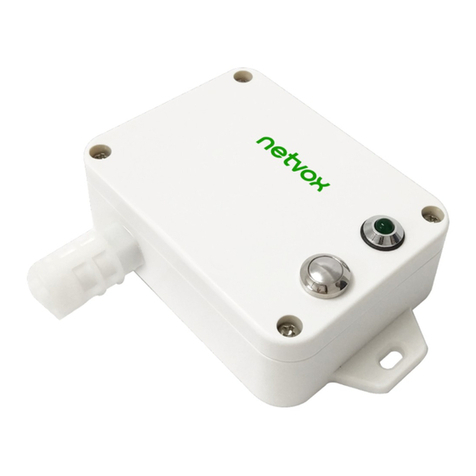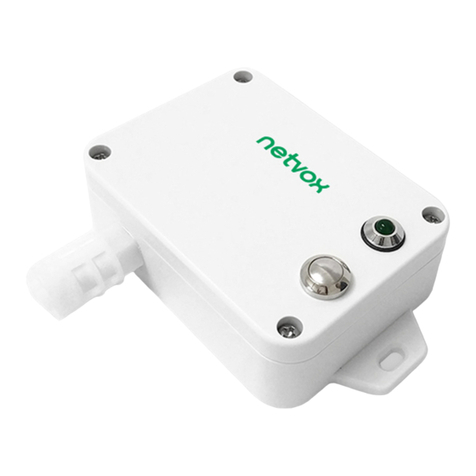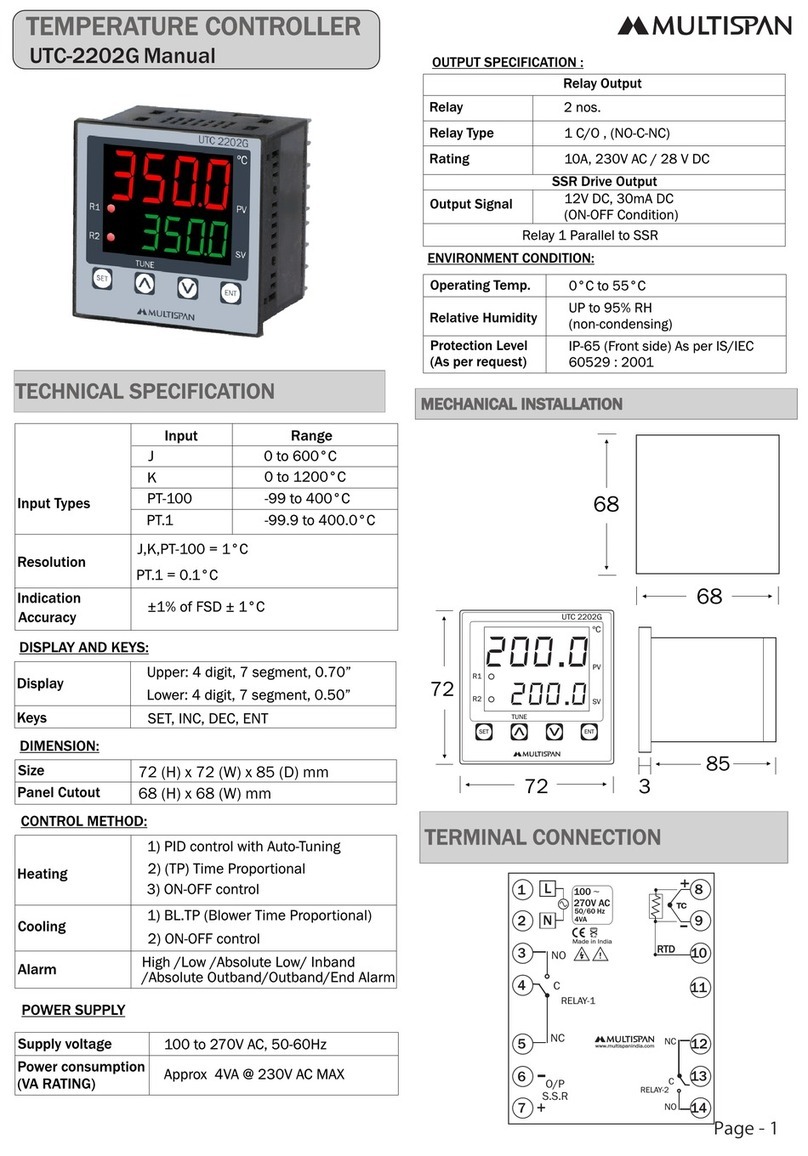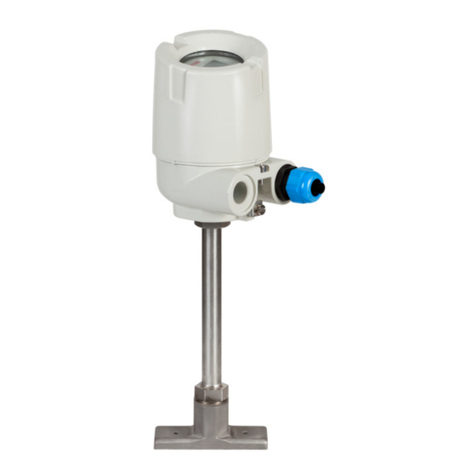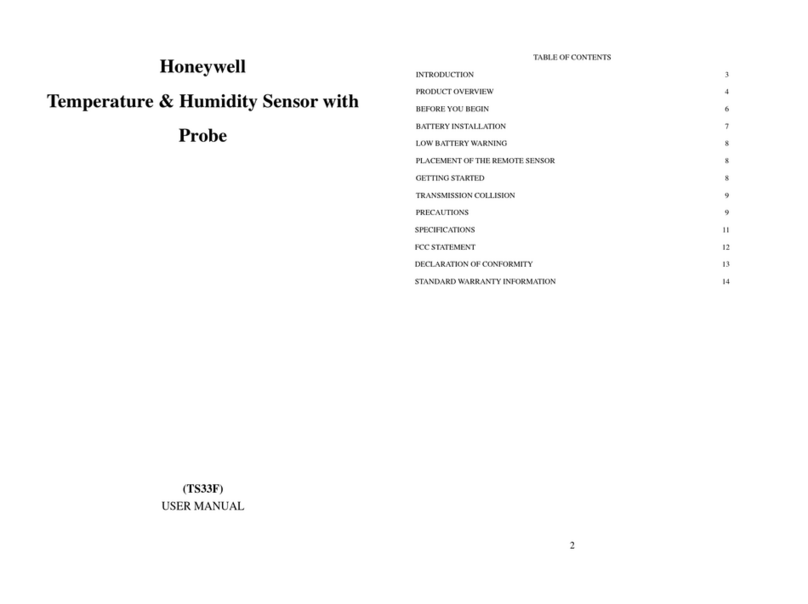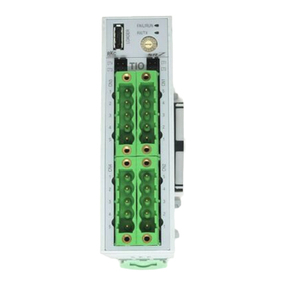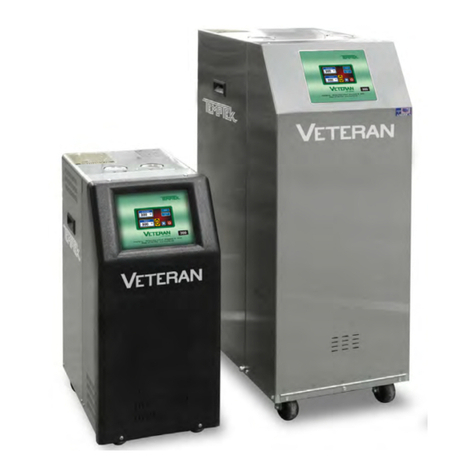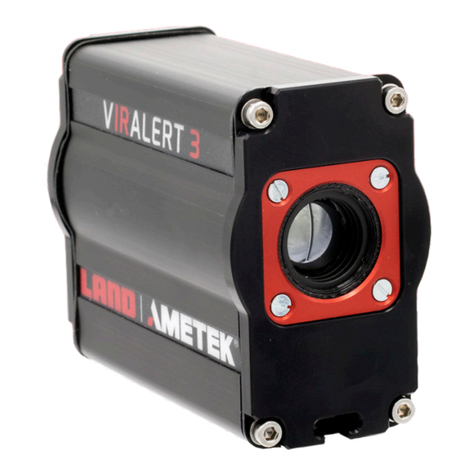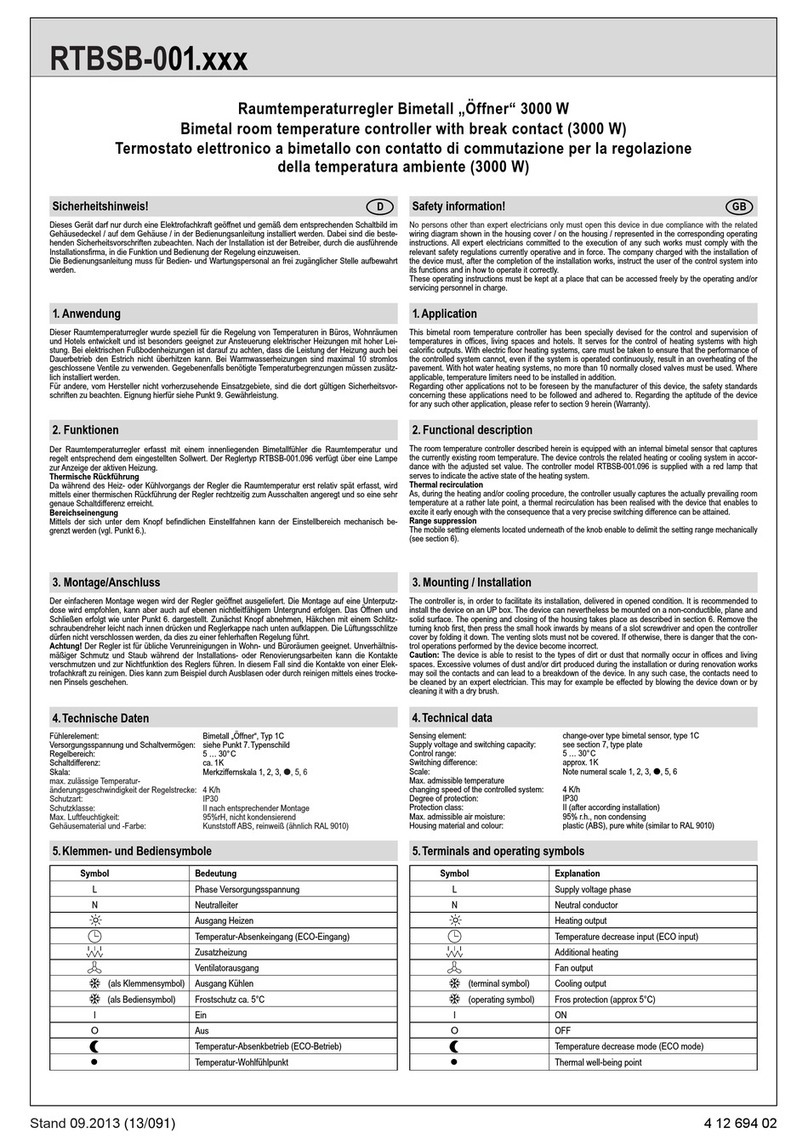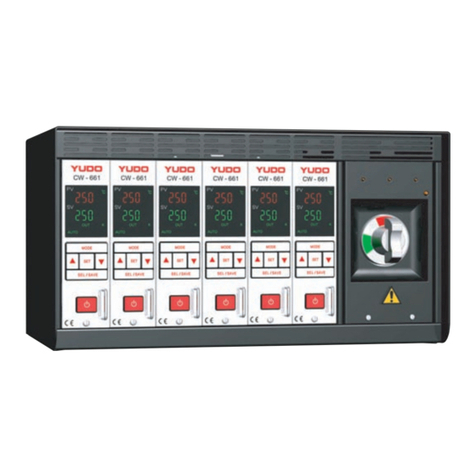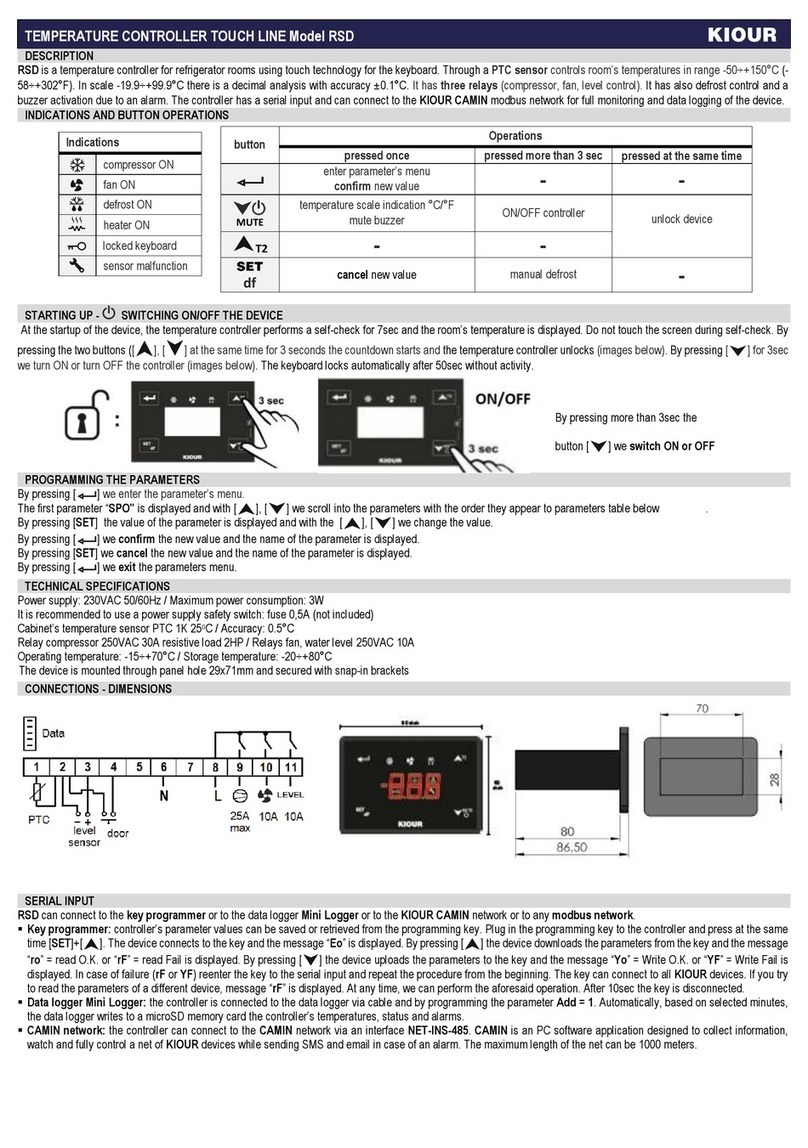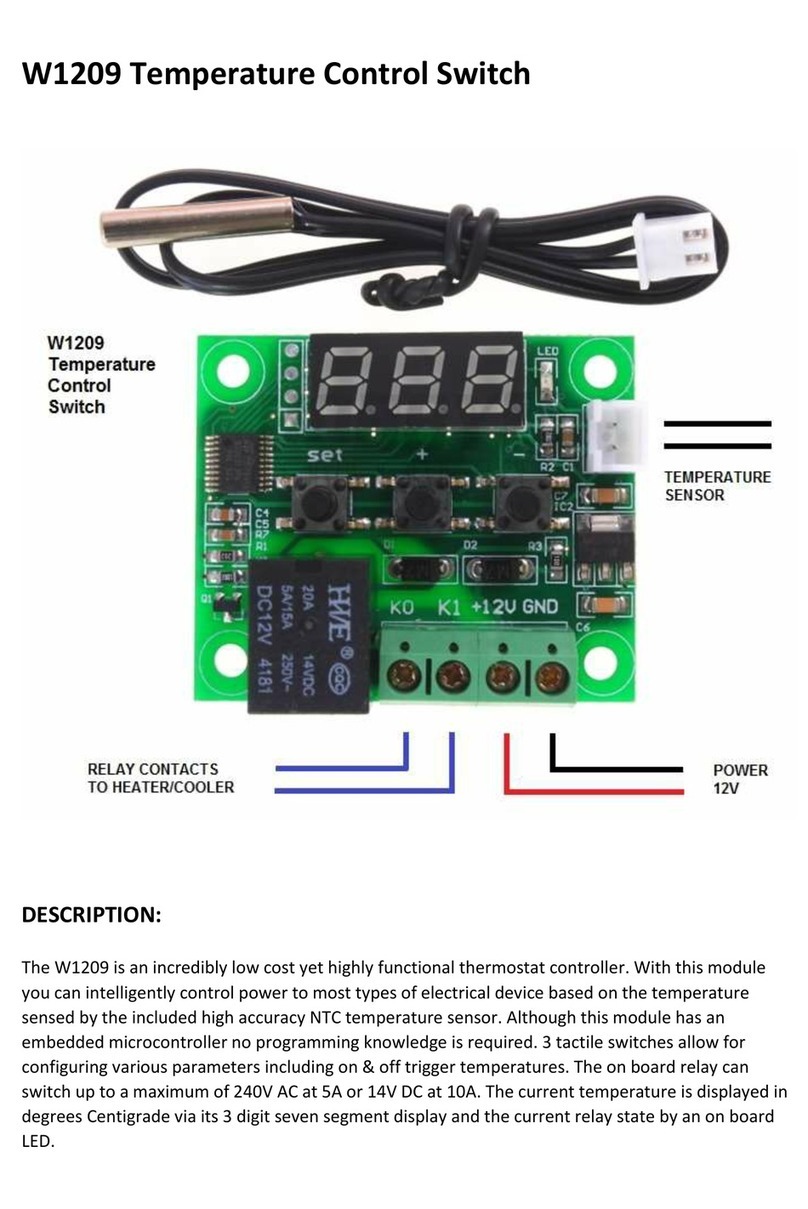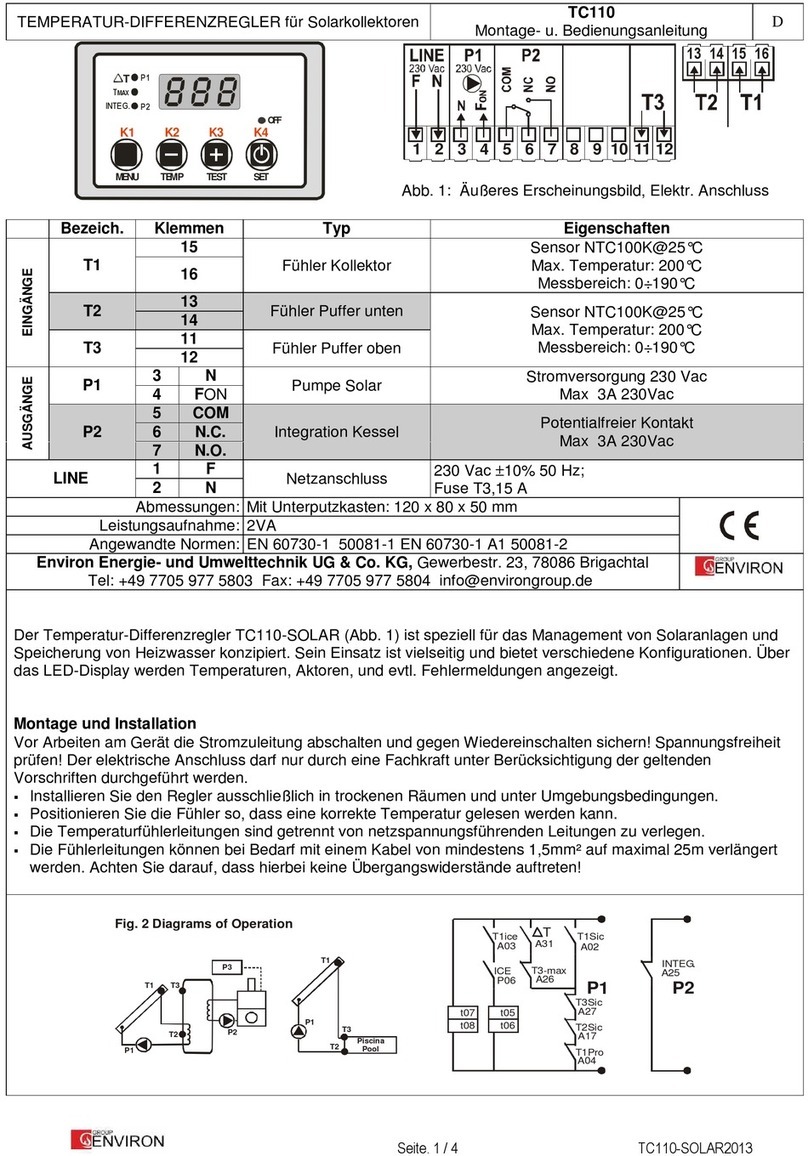netvox R720A User manual

Wireless Temperature and Humidity Sensor for Low Temperature Environment
R720A
Wireless Temperature and Humidity Sensor
for Low Temperature Environment
R720A
User Manual

1
Table of Content
1. Introduction..................................................................................................................................... 2
2. Appearance...................................................................................................................................... 2
3. Main Features.................................................................................................................................. 2
4. Set up Instruction............................................................................................................................. 3
5. Data Report ..................................................................................................................................... 5
6. Control Command........................................................................................................................... 6
7. Example Application ....................................................................................................................... 8
8. Installation....................................................................................................................................... 9
9. Information about Battery Passivation .......................................................................................... 10
9.1 To determine whether a battery requires activation................................................................. 10
9.2 How to activate the battery ..................................................................................................... 10
10. Important Maintenance Instruction...............................................................................................11

2
1. Introduction
R720A is a long-distance wireless temperature and humidity device for Netvox Class A type equipment based on LoRaWAN open
protocol, compatible with LoRaWAN protocol.
LoRa Wireless Technology:
LoRa is a wireless communication technology dedicated to long distance and low power consumption. Compared with other
communication methods, LoRa spread spectrum modulation method greatly increases to expand the communication distance.
Widely used in long-distance, low-data wireless communications. For example, automatic meter reading, building automation
equipment, wireless security systems, industrial monitoring. Main features include small size, low power consumption,
transmission distance, anti-interference ability and so on.
LoRaWAN:
LoRaWAN uses LoRa technology to define end-to-end standard specifications to ensure interoperability between devices and
gateways from different manufacturers.
2. Appearance
Fig.1 R720A Appearance
3. Main Features
⚫Compatible with LoRaWAN
⚫2 ER14505 lithium batteries (3.6V / section) parallel power supply
⚫Detectable air temperature and humidity
⚫Simple operation and setting

3
⚫The base is attached with a magnet that can be attached to a ferrous object
⚫Protection class IP65
⚫Compatible with LoRaWANTM Class A
⚫Frequency hopping spread spectrum
⚫Configuration parameters can be configured via a third-party software platform, data can be read and alerts can be set via
SMS text and email (optional)
⚫Applicable to third-party platforms: Actility/ThingPark, TTN, MyDevices/Cayenne
⚫Low power consumption and long battery life
Note:
Battery life is determined by the sensor reporting frequency and other variables, please refer to
http://www.netvox.com.tw/electric/electric_calc.html
On this website, users can find battery life time for varied models at different configurations.
4.Set up Instruction
On/Off
Power on
Insert batteries.
(users may need a flat blade screwdriver to open)
Turn on
Press and hold the function key for 3 seconds till the green indicator flashes once.
Turn off
(Restore to factory setting)
Press and hold the function key for 5 seconds till the green indicator flashes for 20 times.
Power off
Remove Batteries.
Note:
1. Remove and insert the battery; the device is at off state by default.
2. On/off interval is suggested to be about 10 seconds to avoid the interference of capacitor
inductance and other energy storage components.
3. Five seconds after power on, the device will be in engineering test mode.
Network Joining
Never joined the network
Turn on the device to search the network.
The green indicator stays on for 5 seconds: success
The green indicator remains off: fail
Had joined the network
Turn on the device to search the previous network.
The green indicator stays on for 5 seconds: success
The green indicator remains off: fail

4
Fail to join the network
(when the device is on)
First two mins: wake up every 15 seconds to send request.
After two mins: enter sleeping mode and wake up every 15 minutes to send request.
Note: Suggest to remove batteries if the device is not used to save power.
Suggest to check the device verification information on the gateway
or consult your platform server provider.
Function Key
Press and hold for 5
seconds
Restore to factory setting / Turn off
The green indicator flashes for 20 times: success
The green indicator remains off: fail
Press once
The device is in the network: green indicator flashes once and sends a report
The device is not in the network: green indicator remains off
Sleeping Mode
The device is on and in the
network
Sleeping period: Min Interval.
When the reportchange exceeds setting value or the state changes: send a data report according to
Min. Interval.
The device is on but not in
the network
First two mins: wake up every 15 seconds to send request.
After two mins: enter sleeping mode and wake up every 15 minutes to send request.
Note: Suggest to remove batteries if the device is not used.
Suggest to check the device verification information on the gateway
or consult your platform server provider.
Low Voltage Warning
Low Voltage
3.2V

5
5. Data Report
Data Report
The device will immediately send a report of the version package and a report data with temperature and humidity and voltage
values.
The device sends data in the default configuration before any configuration is done.
Maximum time: Max Interval
Minimum time: Min Interval (by default, the current voltage value is detected every Min Interval)
Default reportchange:
Battery --- 0x01 (0.1V)
Air temperature default reportchange: 1 °C
Air humidity default reportchange: 1%
Note: The device data reporting cycle is configurated before shipment .
The interval between two reports must be the minimum time
R720A default Max Interval = 15min, Min Interval = 15min (if there is special custom shipment, the setting is changed
according to customer requirements)
Please refer Netvox LoRaWAN Application Command document and Netvox Lora Command Resolver
http://cmddoc.netvoxcloud.com/cmddoc to resolve uplink data.
Data report configuration and sending period are as following:
Min Interval
(Unit:second)
Max Interval
(Unit:second)
Reportable Change
Current Change≥
Reportable Change
Current Change <
Reportable Change
Any number between
1~65535
Any number between
1~65535
Can not be 0.
Report
per Min Interval
Report
per Max Interval

6
6. Control Command
FPort:0x07
Bytes
1
1
Var(Fix =9 Bytes)
CmdID
DeviceType
NetvoxPayLoadData
CmdID–1 bytes
DeviceType–1 byte –Device Type of Device
NetvoxPayLoadData–var bytes (Max=9bytes)
(1)Command Configuration:
MinTime = 1min、MaxTime = 1min、BatteryChange = 0.1v、TemperatureChange = 1℃、HumidityChange = 1%
Downlink:016E003C003C0100640064 003C(Hex) = 60(Dec)
Response:
816E000000000000000000(Configuration success)
816E010000000000000000(Configuration failure)
Description
Device
CmdID
Device
Type
NetvoxPayLoadData
Config
ReportReq
R720A
0x01
0x6E
MinTime
(2bytes
Unit:s)
MaxTime
(2bytes
Unit:s)
BatteryChange
(1byte
Unit:0.1v)
TemperatureChange
(2byte Unit:0.01℃)
HumidityChange
(2byte
Unit:0.01%)
Config
ReportRsp
0x81
Status
(0x00_su
ccess)
Reserved
(8Bytes,Fixed 0x00)
ReadConfi
g
ReportReq
0x02
Reserved
(9Bytes,Fixed 0x00)
ReadConfi
g
ReportRsp
0x82
MinTime
(2bytes
Unit:s)
MaxTime
(2bytes
Unit:s)
BatteryChange
(1byte
Unit:0.1v)
TemperatureChange
(2byte Unit:0.01℃)
HumidityChange
(2byte
Unit:0.01%)

7
(2)Read Configuration:
Downlink:026E000000000000000000
Response:
826E003C003C0100640064(Current configuration)
Example#1 based on
MinTime = 1 Hour, MaxTime= 1 Hour, Reportable Change i.e. BatteryVoltageChange=0.1V
Note: MaxTime=MinTime. Data will only be report according to MaxTime (MinTime) duration regardless BtteryVoltageChange
value.
Example#2 based on
MinTime = 15 Minutes, MaxTime= 1 Hour, Reportable Change i.e. BatteryVoltageChange= 0.1V.
Example#3 based on
MinTime = 15 Minutes, MaxTime= 1 Hour, Reportable Change i.e. BatteryVoltageChange= 0.1V.

8
Notes:
1) The device only wakes up and performs data sampling according to MinTime Interval.
When it is sleeping, it does not collect data.
2) The data collected is compared with the last data reported. If the data change value is greater than the ReportableChange value,
the device reports according to MinTime interval.
If the data variation is not greater than the last data reported, the device reports according to MaxTime interval.
3) We do not recommend to set the MinTime Interval value too low. If the MinTime Interval is too low, the device wakes up
frequently and the battery will be drained soon.
4) Whenever the device sends a report, no matter resulting from data variation, button pushed or MaxTime interval, another cycle
of MinTime/MaxTime calculation is started.
7. Example Application
In the case of detecting whether the motor is working normally, it is necessary to install the device in the state where the device is
powered off and the motor is stationary. It is recommended to install it horizontally. After the fixing is completed, power on the
device. The device performs offset calibration of the device after one minute of network-joining. (The device offset cannot be
moved after calibration. If it needs to be moved, it needs to be powered off for 1 minute and then re-offset calibration). The
equipment needs to collect the triaxial acceleration and temperature of the target motor for a period of time, and it is used as a
reference for the setting of the static threshold, the motion threshold and whether the motor is abnormal. Assume that the acquired
Z-axis acceleration is stable at 100m/s2with an error of ±2m/s2, and the active threshold can be set to 110m/s2, and the static
threshold is 104m/s2. The specific configuration needs to be based on actual conditions. The configuration of the active threshold
and the static threshold can be found in the Netvox LoRaWAN Application Command V1.8.6 document.

9
8. Installation
This product comes with waterproof function. When using it, the back of it can be adsorbed on the iron surface, or the two ends
can be fixed to the wall with screws.
Note: To install the battery, use a screwdriver or similar tool to assist in opening the battery cover.
1. The temperature and humidity sensor (R720A) has a
built-in magnet (as shown by the dotted line in the figure
below). It can be attached to the surface with iron material
during installation, which is convenient and quick.
Comment
Do not install the device in a metal shielded box or in an
environment surrounded by other electrical equipment to
avoid affecting the wireless transmission of the device.
2. The temperature and humidity sensor detects the
temperature (or humidity) according to Min Time. When
the detected temperature value (or humidity value) is
compared with the last report, it exceeds the set value
(temperature default 1 ℃; humidity default 1%), that is,
temperature. If the change exceeds 1 ° C (or humidity
exceeds 1%), the currently detected value is sent.
3. If the change value of temperature or humidity does
not exceed the set value, the data is reported regularly
according to the Max Time.
This figure shows the application of the temperature and
humidity sensor (R720A) in a refrigerator.
It can also be applied to the following scenarios:
⚫Restaurant (refrigerator or freezer)
⚫Supermarket (freezer)
⚫Engine room
⚫Environmental monitoring
⚫Smart cities and buildings
⚫Storage and transportation of food and medicine
⚫Flowers and other perishable foods
⚫Wall or logistics refrigerator
where temperature or humidity needs to be detected

10
9. Information about Battery Passivation
Many of Netvox devices are powered by 3.6V ER14505 Li-SOCl2 (lithium-thionyl chloride) batteries that offer many
advantages including low self-discharge rate and high energy density.
However, primary lithium batteries like Li-SOCl2 batteries will form a passivation layer as a reaction between the lithium
anode and thionyl chloride if they are in storage for a long time or if the storage temperature is too high. This lithium chloride
layer prevents rapid self-discharge caused by continuous reaction between lithium and thionyl chloride, but battery passivation
may also lead to voltage delay when the batteries are put into operation, and our devices may not work correctly in this situation.
As a result, please make sure to source batteries from reliable vendors, and it is suggested that if the storage period is more
than one month from the date of battery production, all the batteries should be activated.
If encountering the situation of battery passivation, users can activate the battery to eliminate the battery hysteresis.
ER14505 Battery Passivation:
9.1 To determine whether a battery requires activation
Connect a new ER14505 battery to a resistor in parallel, and check the voltage of the circuit.
If the voltage is below 3.3V, it means the battery requires activation.
9.2 How to activate the battery
a. Connect a battery to a resistor in parallel
b. Keep the connection for 5~8 minutes
c. The voltage of the circuit should be ≧3.3, indicating successful activation.
Brand
Load Resistance
Activation Time
Activation Current
NHTONE
165 Ω
5 minutes
20mA
RAMWAY
67 Ω
8 minutes
50mA
EVE
67 Ω
8 minutes
50mA
SAFT
67 Ω
8 minutes
50mA
Note:
If you buy batteries from other than the above four manufacturers, then the battery activation time, activation current, and
required load resistance shall be mainly subject to the announcement of each manufacturer.

11
10. Important Maintenance Instruction
Your device is a product of superior design and craftsmanship and should be used with care. The following suggestions will help
you use the warranty service effectively.
• Keep the equipment dry. Rain, moisture, and various liquids or moisture may contain minerals that can corrode electronic
circuits. In case the device is wet, please dry it completely.
• Do not use or store in dusty or dirty areas. This can damage its detachable parts and electronic components.
• Do not store in excessive heat. High temperatures can shorten the life of electronic devices, destroy batteries, and deform or
melt some plastic parts.
• Do not store in a cold place. Otherwise, when the temperature rises to normal temperature, moisture will form inside, which will
destroy the board.
• Do not throw, knock or shake the device. Rough handling of equipment can destroy internal circuit boards and delicate
structures.
• Do not wash with strong chemicals, detergents or strong detergents.
• Do not apply with paint. Smudges can block debris in detachable parts and affect normal operation.
• Do not throw the battery into a fire to prevent the battery from exploding. Damaged batteries may also explode.
All of the above suggestions apply equally to your device, battery and accessories.
If any device is not working properly, please take it to the nearest authorized service facility for repair.
Table of contents
Other netvox Temperature Controllers manuals
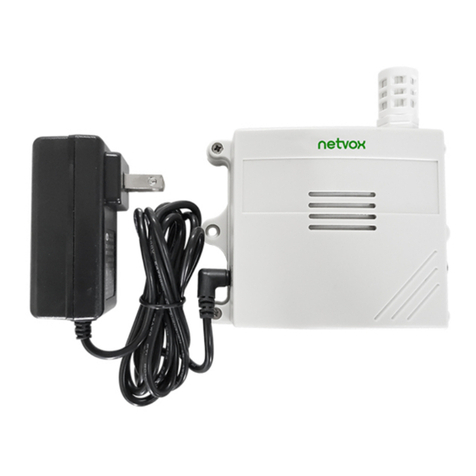
netvox
netvox RA0715 User manual
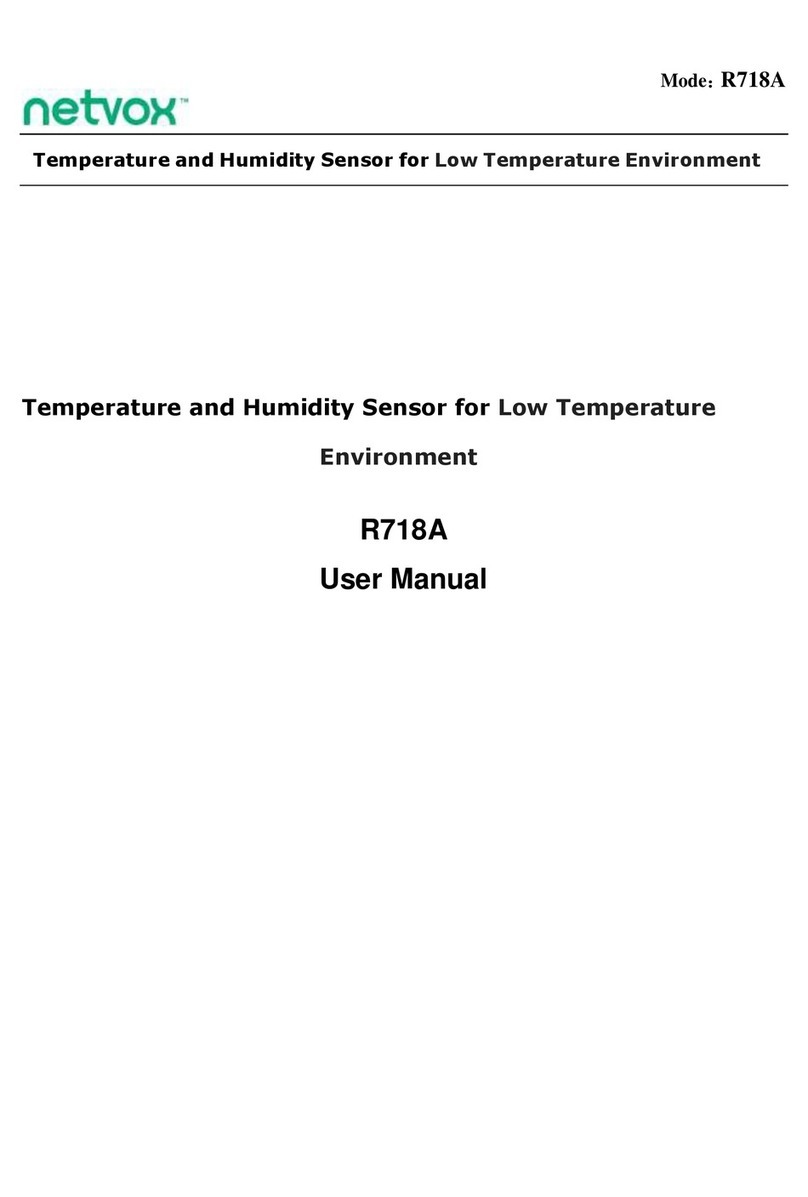
netvox
netvox R718A User manual
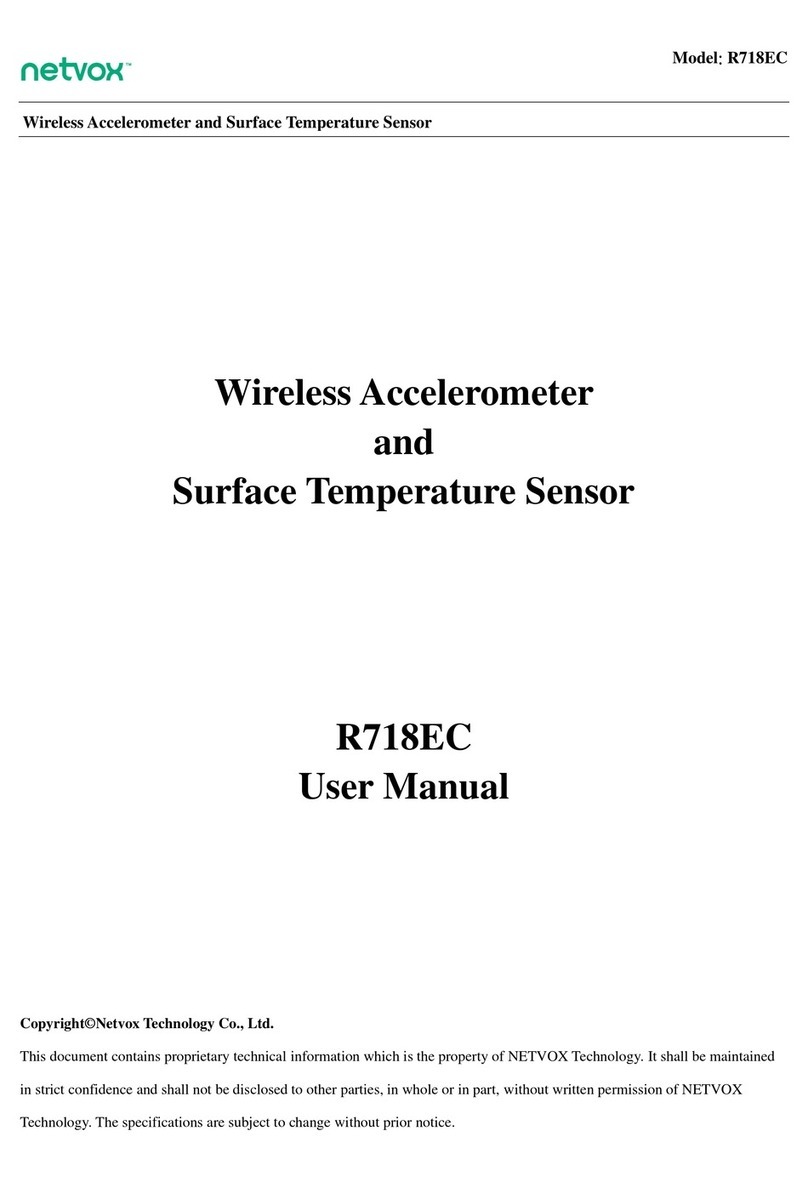
netvox
netvox R718EC User manual
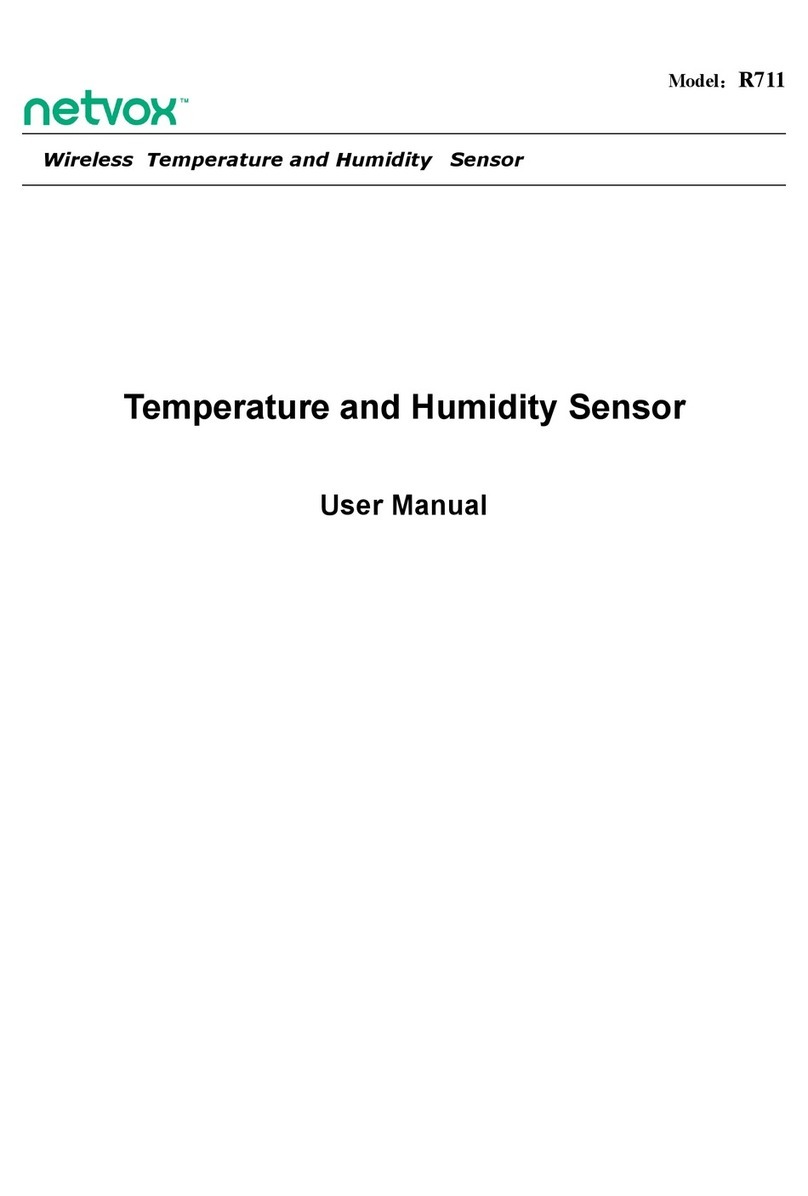
netvox
netvox R711 User manual
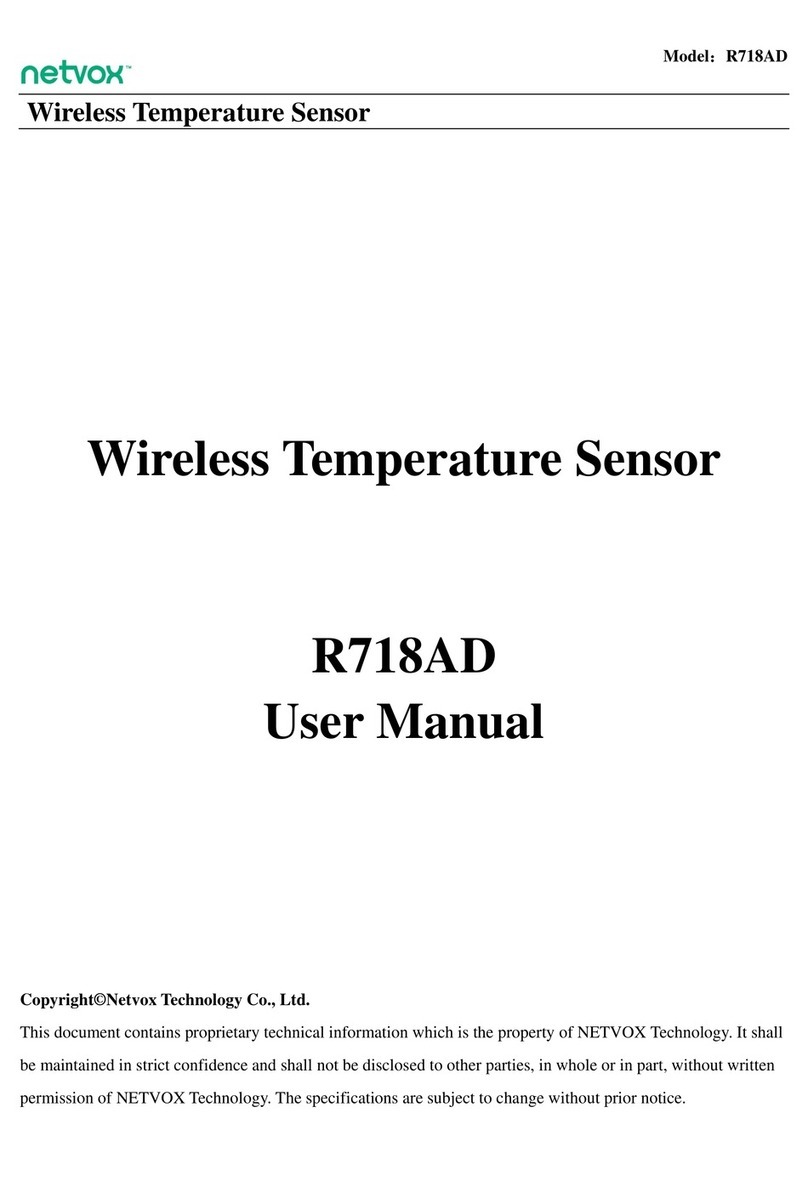
netvox
netvox R718AD User manual

netvox
netvox R720C User manual
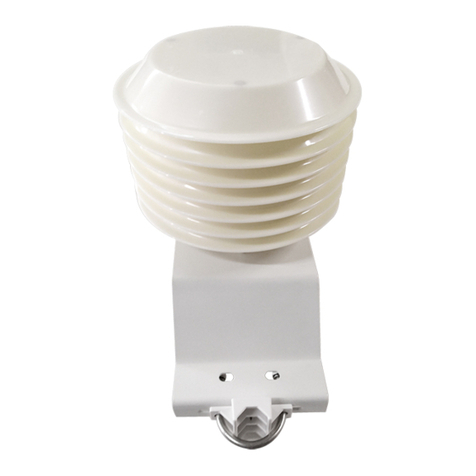
netvox
netvox RA0716 User manual
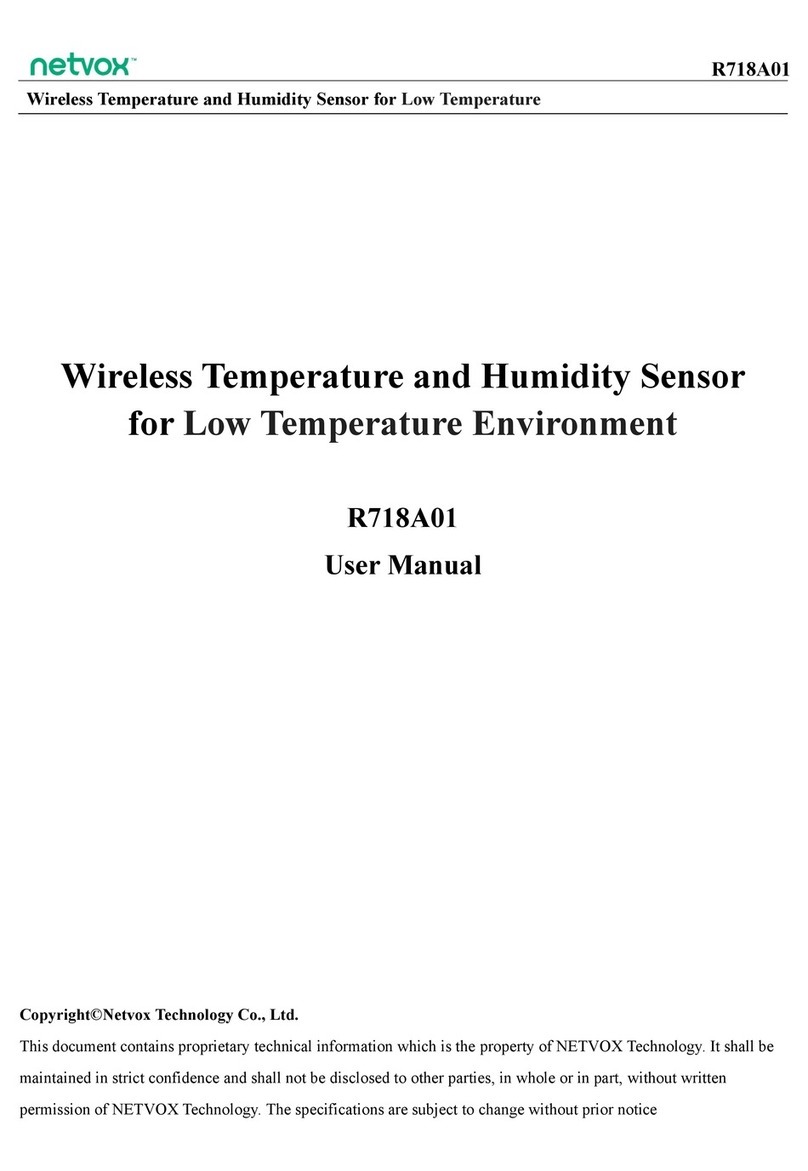
netvox
netvox R718A01 User manual
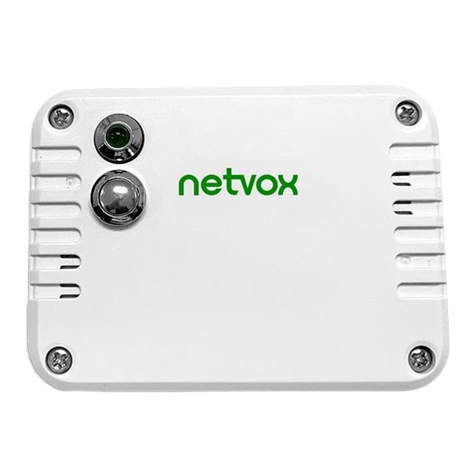
netvox
netvox R720E User manual
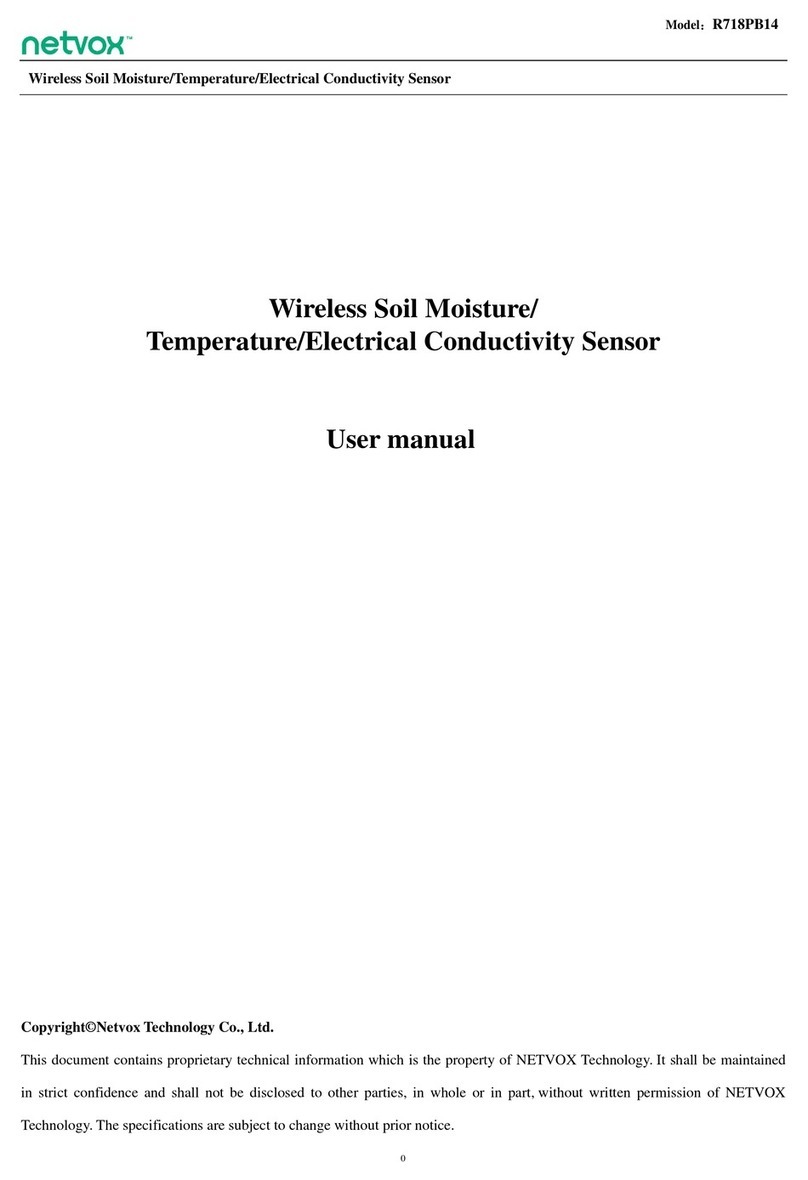
netvox
netvox R718PB14 User manual
